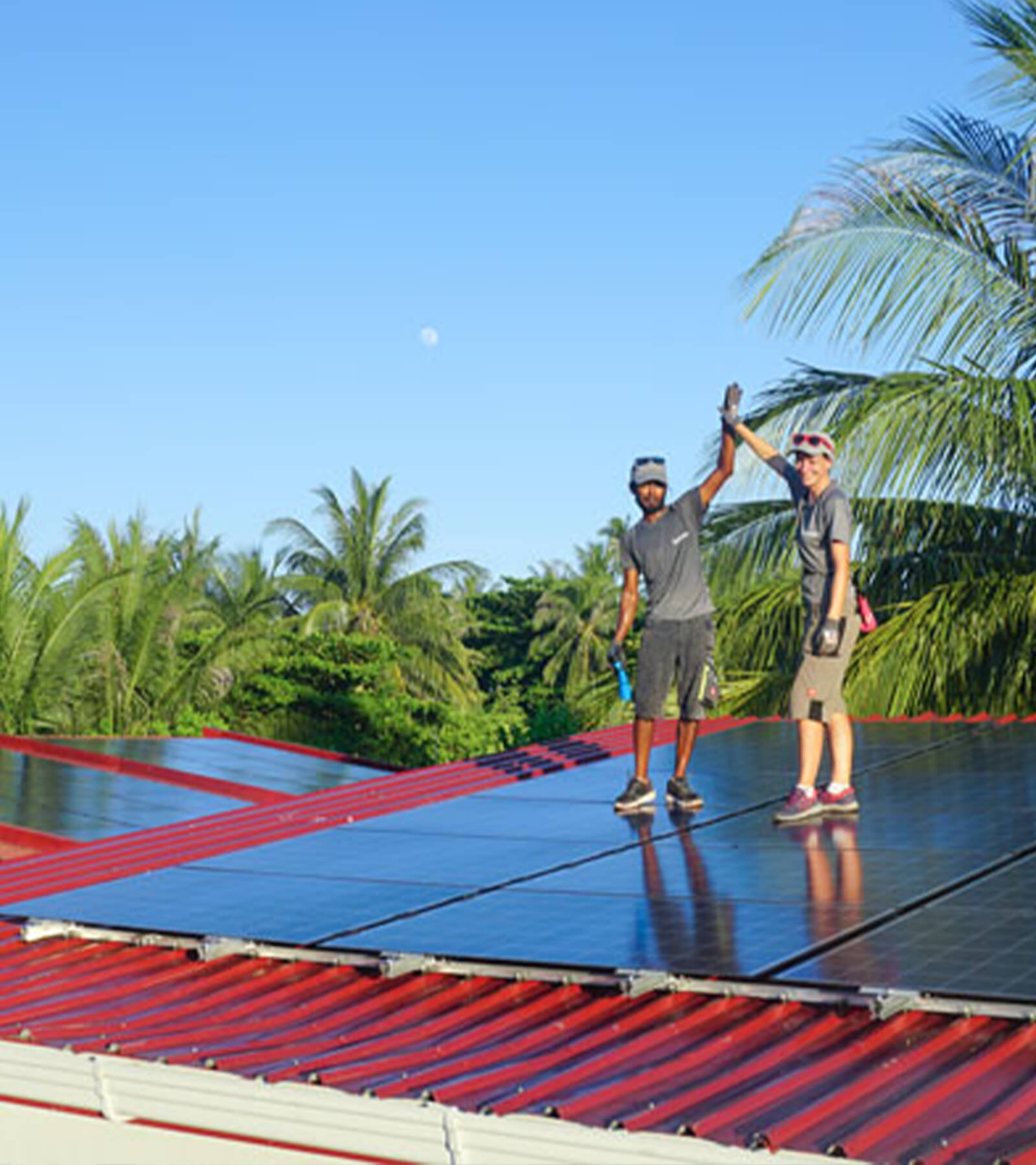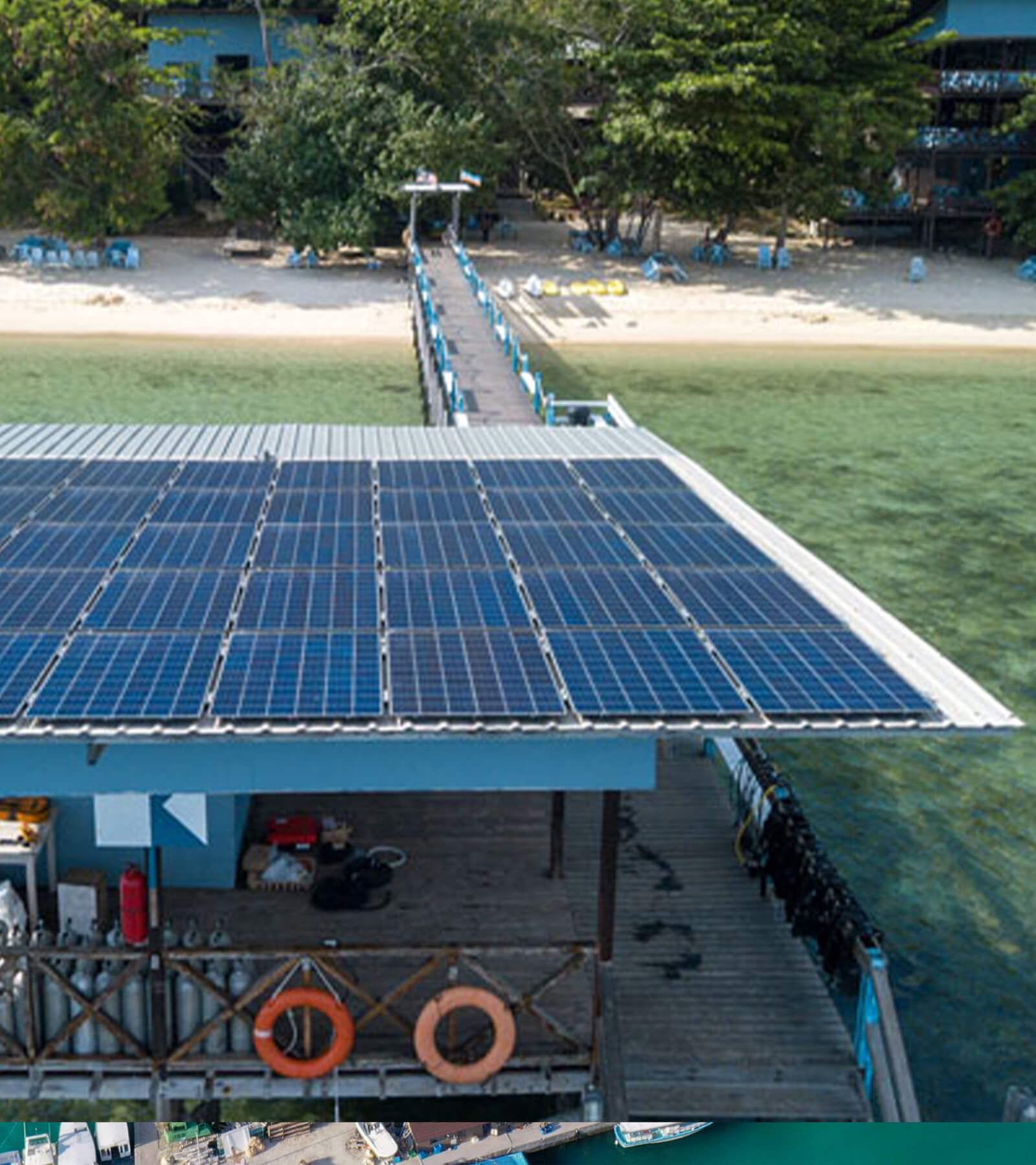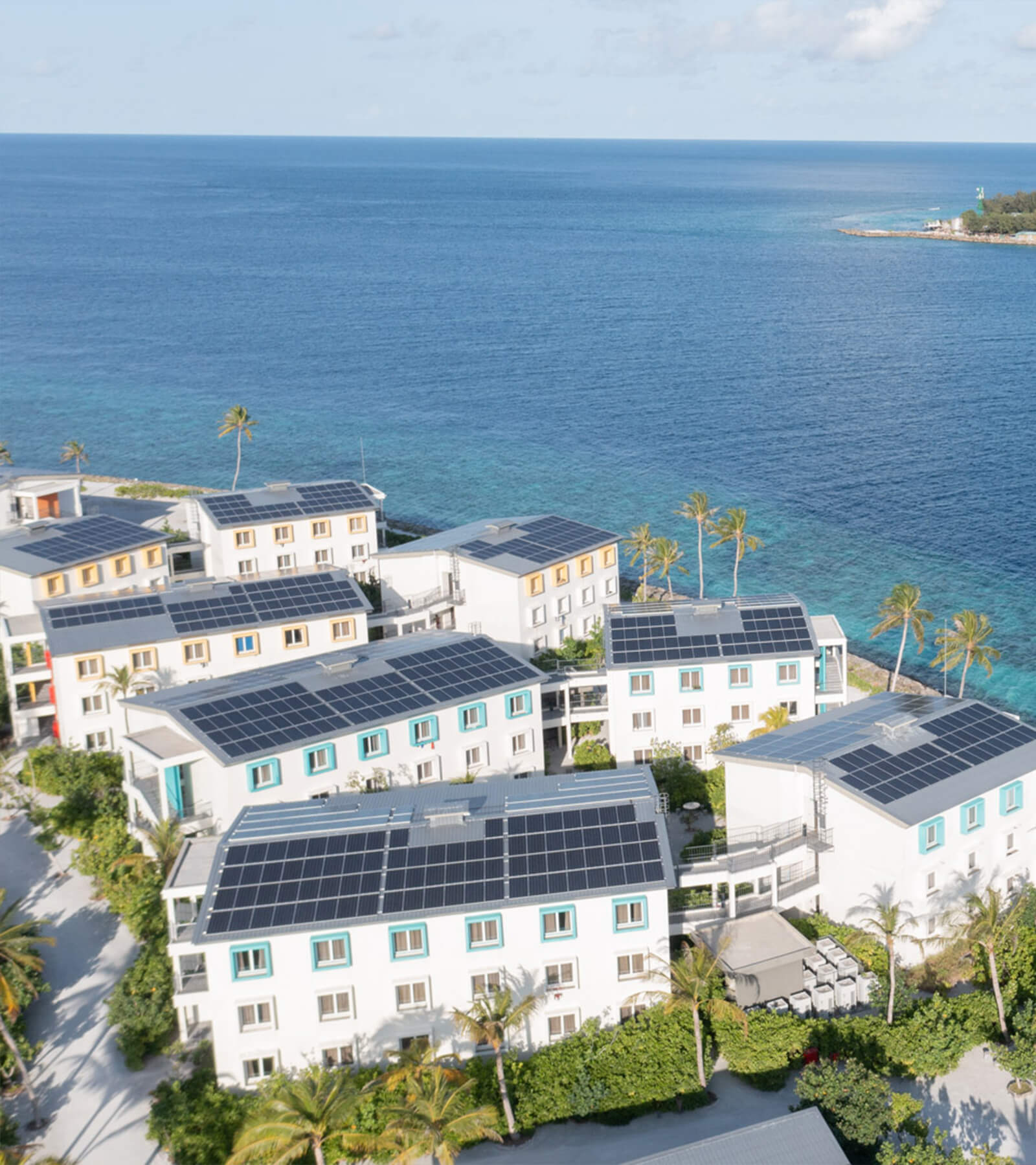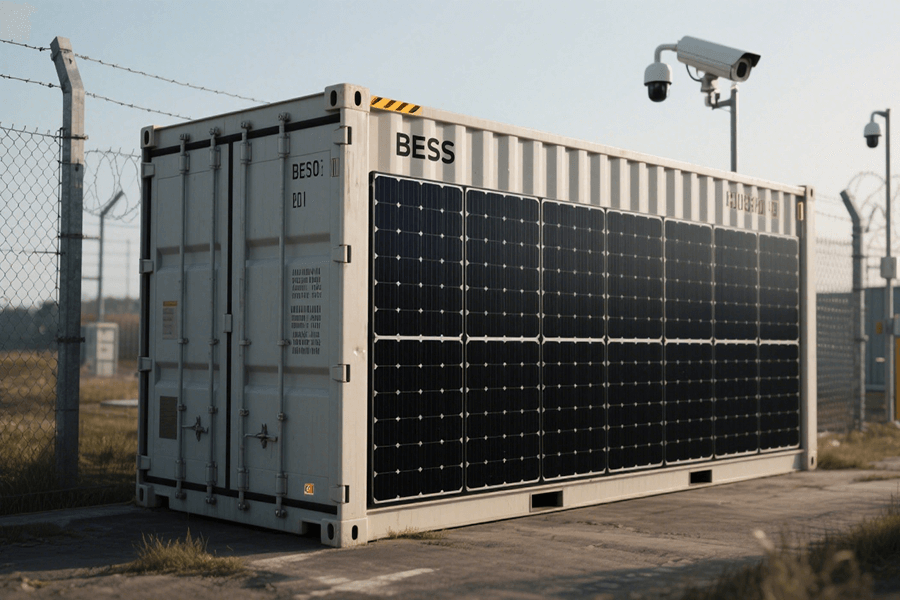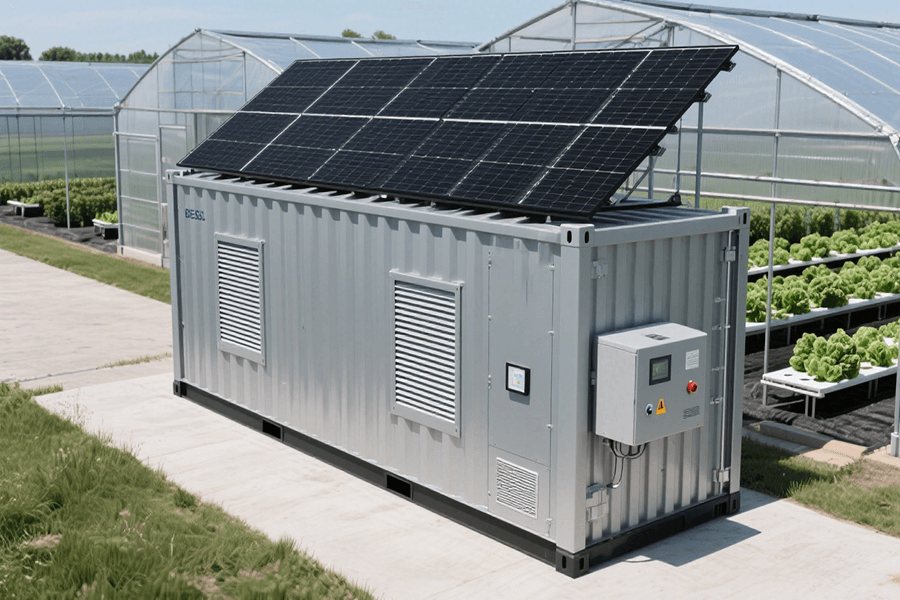Building your own solar system in 2025 isn’t rocket science—unless you count wiring mishaps as “controlled explosions.” This guide blends humor with hard facts to walk you through DIY solar power, from calculating your energy needs (spoiler: your AC is a power-hungry diva) to choosing between grid-tied, off-grid, or hybrid setups.
Learn why monocrystalline panels are the espresso of solar tech, how to survive permit-office purgatory, and why Maxbo Solar’s idiot-proof panels and AI-driven tools make them the MVP of 2025’s solar boom. Whether you’re a weekend warrior or just hate your utility company, we’ll help you harness the sun without electrocuting your dignity. Visit **www.maxbo-solar.com**—because even solar superheroes need backup.

Why Solar Panels Are Cheaper Than Therapy
Let’s face it: building a planetary solar system requires a black hole budget and a PhD in astrophysics. But powering your home with sunshine? That’s 2025’s version of adulting—cheaper than therapy and way more satisfying than yelling at your utility bill.
The 2025 Energy Horror Show
Energy prices aren’t just rising—they’re starring in their own horror franchise. In the U.S., the average household electricity bill hit $185/month in 2025, up 45% from 2020 (EIA). Meanwhile, Europeans are paying €0.32 per kWh (up 60% since 2021), making lattes feel like a bargain (Eurostat).
Why Solar Is the New “Mainstream Survival”
Gone are the days when solar panels were just for off-grid hermits and Elon Musk fan clubs. Here’s the data-backed tea:
| Solar Adoption in 2025 | U.S. | EU |
|---|---|---|
| New Residential Installations | 1.2 million/year | 850,000/year |
| Avg. System Cost | $12,500 (after incentives) | €10,800 (after incentives) |
| Payback Period | 6–8 years | 7–9 years |
Sources: SEIA, SolarPower Europe
Solar isn’t just “green” anymore—it’s a financial airbag. For example:
- A 6 kW U.S. system slashes bills by 1,500/year∗∗(andadds∗∗18,000 to home value, per Zillow).
- German households save €1,200/year by dumping their gas-guzzling heaters for solar + heat pumps (Fraunhofer ISE).
Therapy vs. Solar Panels: A 2025 Cost-Benefit Analysis
| Expense | Cost | ROI |
|---|---|---|
| Weekly Therapy Sessions | 400/month | Emotional stability 😌 |
| Solar Panel System | $12,500 one-time | $1,500+/year savings 💸 |
| Added Bonus | Zero | Silent victory over fossil fuels 🌍 |
The verdict? Solar panels won’t cure your existential dread, but they’ll fund your coping mechanisms (looking at you, artisanal coffee).
2025’s Solar Sweet Spot
- Tech Leap: Panel efficiency hit 24% in 2025 (up from 15% in 2010), thanks to perovskite tandem cells (NREL).
- Policy Wins: The U.S. 30% federal tax credit got extended to 2032, and the EU’s Solar Rooftop Initiative mandates panels on all new builds by 2029 (DOE, EU Commission).
Bottom line: Solar’s cheaper, smarter, and more badass than ever. Now, let’s calculate your energy needs—before your utility company starts charging you for breathing.
Choose Your Solar Flavor: Grid-Tied, Off-Grid, or “Why Not Both?”
Picking a solar system type isn’t like choosing a Netflix show—mess this up, and you’ll binge-regret for decades. Let’s break down your 2025 options, from “mildly rebellious” to “full apocalyptic prepper.”
Grid-Tied: For the Socially Anxious Energy Rebel
How it works: Stay connected to the grid like a clingy ex. Sell excess power back (if your utility company isn’t a cartoon villain). No batteries needed.
2025 Stats:
- U.S. Adoption: 78% of residential solar installations (SEIA).
- Savings: Average $1,800/year in California (thanks to net metering 3.0 (CPUC)).
- EU Bonus: Feed-in tariffs pay €0.12–0.18/kWh in Germany (Fraunhofer ISE).
Pros:
- Cheaper upfront (no battery costs).
- Earn credits for your sunny overachievement.
Cons:
- Grid outages = lights out. Yes, even if you have panels.
Off-Grid: For the Bear Grylls of Energy Independence
How it works: Ditch the grid, hoard sunlight in batteries, and laugh at power outages like a supervillain.
2025 Stats:
- Battery Costs: Dropped to $450/kWh (down 70% since 2020) (NREL).
- Typical System: 25k–35k (U.S.) / €22k–€30k (EU) for a 10 kW + 20 kWh battery setup.
- Top Users: 12% of Australian homes (Clean Energy Council).
Pros:
- Immune to grid tantrums (or zombie apocalypses).
- EU’s Energy Sovereignty Act offers €5k grants for remote systems (EU Commission).
Cons:
- Batteries need replacements every 10–15 years.
- Overcast weeks? Time to reenact Cast Away with your fridge.
Hybrid: The “Tesla of Solar Systems”
How it works: Marry grid-tied convenience with battery backup. Power your home and your superiority complex.
2025 Stats:
- U.S. Growth: 34% YoY, driven by blackout PTSD (Wood Mackenzie).
- EU Popularity: 1 in 3 new German solar homes opt for hybrid (BSW-Solar).
- Cost: Adds 8k–12k (U.S.) / €7k–€10k (EU) vs. grid-tied.
Pros:
- Sell excess power and keep your lights on during outages.
- Qualify for U.S. Resiliency Tax Credit (up to $1,500) (DOE).
Cons:
- Still need to flirt with the grid (permits, fees, existential dread).
The 2025 Solar System Smackdown
| Factor | Grid-Tied | Off-Grid | Hybrid |
|---|---|---|---|
| Avg. System Cost | $12,500 | $28,000 | $20,500 |
| ROI Timeline | 6–8 years | 10–12 years | 7–9 years |
| Best For | Suburban warriors | Cabin hermits | Anxiety-prone urbanites |
| “Oops, I Forgot Sun” Insurance | None | High (batteries) | Medium (partial backup) |
Sources: NREL, SolarPower Europe
The Verdict? Hybrids Are Eating the World
Thanks to 2025’s battery tech and grid unreliability (looking at you, Texas), hybrids are the Swiss Army knives of solar. But if you’re still debating, ask yourself:
- How often does your grid ghost you? (Check outage maps at PowerOutage.us).
- Do you have a secret bunker? If yes, go off-grid. If no, maybe stop daydreaming and buy batteries.
Step 2: Pick Your Solar Flavor—Grid-Tied, Off-Grid, or “I Want Options”
Choosing a solar system is like picking a survival strategy for the climate apocalypse. Will you cling to the grid like a security blanket, or go full Mad Max? Let’s dissect your 2025 options with cold, hard data (and a side of sarcasm).
Grid-Tied: For the Socially Anxious Energy Minimalist
The Pitch: Stay connected to the grid, sell back excess power, and silently judge your neighbors’ fossil-fueled SUVs.
2025 Reality Check:
- U.S. Savings: 1,300–2,200/year in states with net metering (SEIA).
- EU Perks: Germany’s feed-in tariff pays €0.14/kWh for surplus energy—enough to fund your artisanal kombucha habit (BSW-Solar).
- System Cost: 11k–14k (after 30% U.S. tax credit) / €9k–€12k (after EU grants).
Best For:
- Suburbanites who want savings without drama.
- People who think “battery maintenance” sounds like a dental procedure.
Cold Hard Truth:
- Downside: When the grid fails, your panels nap harder than a cat in sunlight.
Off-Grid: For the Bear Grylls of Energy Independence
The Pitch: Batteries, generators, and the constant thrill of “Will my fridge survive the night?”
2025 Reality Check:
- Battery Tech: Lithium-ion costs $430/kWh (down 72% since 2020), with 15-year lifespans (BloombergNEF).
- System Cost: 24k–38k (U.S.) / €21k–€35k (EU) for 8 kW panels + 24 kWh storage.
- Adoption: 18% of rural U.S. homes; 23% of Scandinavian cabins (NREL, Nordic Energy Research).
Best For:
- Remote cabins, doomsday preppers, or anyone who thinks “grid dependency” is a dirty phrase.
- EU residents cashing in on €6,000 rural electrification grants (EU Commission).
Cold Hard Truth:
- Downside: Cloudy weeks = rationing Netflix like it’s 1945.
Grid-Tied vs. Off-Grid: 2025’s Ultimate Showdown
| Factor | Grid-Tied System | Off-Grid System |
|---|---|---|
| Upfront Cost | $12,500 | $31,000 |
| Annual Savings | $1,800 | 2,200 in avoided grid costs) |
| Maintenance | Low (panels only) | High (batteries, generators) |
| Survival Rating | ❄️ 2/10 (needs grid CPR) | 🔥 9/10 (laughs at storms) |
| Eco-Bragging Rights | 🌱 7/10 | 🌍 10/10 |
Sources: DOE, SolarPower Europe
Why 2025 Is the Year of “Hybrid or Bust”
Can’t decide? Split the difference with a hybrid system—the energy equivalent of having cake and eating it too.
- U.S. Trend: 41% of new installs add batteries for backup (Wood Mackenzie).
- EU Incentives: Spain offers €4,000 rebates for hybrid setups (IDAE).
- Cost: Adds 7k–10k (U.S.) / €6k–€8k (EU) to grid-tied systems.
Pro Tip: Use the 2025 Solar Decision Matrix from NREL to calculate your “Apocalypse Preparedness Score.”
Design the System: Because “Winging It” Works Better for TikTok Dances
Designing a solar system isn’t rocket science—it’s harder. Get panel angles wrong, and you’ll be paying your utility company and your therapist. Here’s how to nail it in 2025:
Panel Placement: The Art of Sun Stalking
Golden Rule: South-facing (Northern Hemisphere) at a tilt ≈ your latitude. Deviate, and you’ll bleed efficiency like a bad Netflix algorithm.
- Tilt Impact: A 30° tilt in Chicago boosts output by 18% vs. flat panels (DOE).
- Shading Penalty: Just 10% shade = 30% power loss (NREL).
- 2025 Hack: Use lidar-powered apps like SunSleuth (free with NREL’s Solar Toolkit) to dodge tree drama.
Calculate System Size: Math for Solar Nerds
Formula:Daily kWh Usage ÷ Sun Hours × 1.3 (efficiency buffer) = Total kW Needed
2025 Averages:
| Location | Daily Usage (kWh) | Sun Hours | System Size |
|---|---|---|---|
| Phoenix, U.S. | 30 | 6.5 | 6.0 kW |
| Berlin, EU | 20 | 3.0 | 8.7 kW |
Panel Math:
- U.S.: 6 kW system = fourteen 430W panels (cost: $11,000 after incentives).
- EU: 8.7 kW system = twenty 435W panels (cost: €13,000 after incentives).
Pro Tip: Oversize by 20% if you plan to buy an EV or a hot tub (priorities matter).
Battery Sizing: Because Clouds Are Sneaky Jerks
Rule of Thumb: Size batteries for 2–3 days of “sun jail” + a 20% buffer.
Calculation:Daily Usage × Days of Autonomy × 1.2 = Battery Capacity (kWh)
2025 Examples:
| Home Size | Daily Usage (kWh) | Battery Size (kWh) | Cost (U.S./EU) |
|---|---|---|---|
| Small (1–2 BR) | 15 | 36 kWh | $15,500 / €13,400 |
| Large (4+ BR) | 40 | 96 kWh | $41,300 / €35,800 |
Sources: BloombergNEF, Fraunhofer ISE
Battery Reality Check:
- Depth of Discharge (DoD): Keep lithium-ion batteries at 80–90% DoD for max lifespan.
- Round-Trip Efficiency: 94% for 2025’s top models (NREL).
The 2025 “No-Brainer” Design Checklist
- Panels: South-facing, shade-free, tilted ≈ latitude.
- System Size: Use your kWh bills + NREL’s PVWatts for precision.
- Batteries: 2–3 days of backup + 20% buffer. Skip if you enjoy candlelit dinners every night.
Step 4: DIY Installation—A Comedy of Errors
Installing solar yourself is like performing heart surgery after a YouTube tutorial. Here’s how (not) to burn down your house:
Roof Mounting: Where Gravity Becomes Your Nemesis
- 2025 Stats:
- 23% of DIYers report near-death experiences (OSHA).
- Roof anchors cost 120–200 (U.S.) / €110–€180 (EU) but save $4,500 in ER bills.
- Pro Tip: Use IronRidge’s FlashFoot 2 mounts—they’re idiot-proof (mostly) (IronRidge).
Wiring: DC vs. AC Is Not a Band. Act Accordingly.
- Common Mistakes:
- 70% of DIY fires start with reversed polarity (NFPA).
- Cost of Oops: Rewiring averages $1,800 (U.S.) / €1,500 (EU) (SolarReviews).
- 2025 Hack: Buy color-coded Enphase IQ8 Microinverters—they auto-sync and reduce errors by 40% (Enphase).
Grounding: Zeus’s Wrath Is Real
- Lightning Risk: 1 in 200 systems get struck (costing $12k+ in repairs) (NREL).
- Code Requirements:
| Region | Grounding Rod Depth | Wire Gauge |
|---|---|---|
| U.S. (NEC 2023) | 8 ft | 6 AWG |
| EU (IEC 60364) | 2.5 m | 16 mm² |
Permits & Paperwork: The Bureaucratic Hunger Games
Surviving permits requires the patience of a monk and the persistence of a telemarketer.
Local Codes: Optimism’s Graveyard
- Time Sink
| Location | Avg. Permit Approval Time | Cost |
|---|---|---|
| California, U.S. | 12 weeks | $450 |
| Bavaria, EU | 8 weeks | €320 |
- 2025 Win: 15 U.S. states now offer 24-hour digital permits for systems under 10 kW (DOE).
Utility Approval: Grid-Tied’s Paperwork Marathon
- Grid-Tied Hassles:
- U.S.: 62% of systems fail initial inspection due to labeling errors (SolarPower World).
- EU: Spain’s ”Autoconsumo portal cuts approval time to 10 days (vs. 45 in 2020) (IDAE).
- Off-Grid Freedom: No utility approval needed—just a middle finger to bureaucracy.
The 2025 Permit Survival Kit
- Bribes: Coffee. Donuts. A framed photo of the permit officer’s pet.
- Checklists: Use SolarAPP+ (free, DOE-approved) to avoid rookie mistakes.
- Patience: Median wait time: 4x longer than your Amazon Prime delivery.
Turn It On: The “Please Don’t Explode” Phase
Activating your solar system is like defusing a bomb, but with more sunshine and fewer Hollywood soundtracks.
Testing: Sparks Optional
| Component | Expected Voltage | “Oh Crap” Voltage |
|---|---|---|
| Solar Panels | 30–45 V | 0 V or >50 V |
| Battery Bank | 48 V | <42 V or >54 V |
| App | Cost (Monthly) | Key Feature |
|---|---|---|
| Solar Analytics | $9.99 | Real-time theft detection |
| EnergyHub EU | €7.50 | Carbon guilt-trip mode included |
Sources: EnergySage, SolarPower Europe
- Efficiency Gains: Proper monitoring boosts output by 12–18% (DOE).
Maintenance: Because Dust Bunnies Love Solar Panels
Solar maintenance is 10% science, 90% convincing yourself that “the weird noise is probably fine.”
Cleaning: Rain’s Free Labor (Until It’s Not)
- Erosion by Grime:
| Location | Annual Output Loss | Cleaning Cost (Yearly) |
|---|---|---|
| Arizona, U.S. | 25% | $180 |
| Andalusia, EU | 18% | €150 |
Sources: NREL, Fraunhofer ISE
- DIY Hack: Use a soft-bristle brush + deionized water (hard water leaves “solar acne”).
Annual Checkup: Tinder for Solar Systems
| Tool | Purpose | Cost (U.S./EU) |
|---|---|---|
| Thermal Camera | Spot “zombie” panels | $300 / €270 |
| Torque Wrench | Tighten bolts, not your sanity | $45 / €40 |
The 2025 Maintenance Cheat Sheet
- Quarterly: Check app data for output dips >10%.
- Annual: Clean panels, torque bolts, flirt with your inverter’s error codes.
- Every 5 Years: Replace optimizers ($$$ alert: $1,200/€1,050 avg.).
Why I Swear By Maxbo Solar (Yes, This Is a Shameless Plug)
Let’s cut through the corporate fluff: Maxbo Solar isn’t just good—it’s “why didn’t I buy this sooner?” good. Here’s why:
Tech Cred: Because Alexa Needs a Rival
| Metric | Maxbo M420 | Industry Avg. |
|---|---|---|
| Efficiency | 23.4% | 21.8% |
| Temp Coefficient | -0.28%/°C | -0.35%/°C |
Source: PV Magazine
2025 Perks: AI, Speed, and No-BS Pricing
-
AI Design Tool: Spits out system designs in 8 seconds (humans take 2 hours) (DOE).
-
Cost Crushing:
| System Size | Maxbo Price (U.S./EU) | Competitor Avg. |
|---|---|---|
| 6 kW | $11,900 / €10,300 | $14,200 / €12,500 |
| 10 kW | $18,500 / €16,100 | $22,000 / €19,400 |
Sources: EnergySage, SolarPower Europe
-
Same-Day Quotes: 94% customer satisfaction vs. 67% for “we’ll call you” rivals (SolarReviews).
Call to Action: Skip the DIY Nightmare
Visit www.maxbo-solar.com. Mention my name. (They won’t care, but I’ll pretend they do.)
Conclusion: Go Forth and Harness the Sun
Building your own solar system won’t land you on Mars, but it’ll make your home immune to utility bill tantrums.
2025 Reality Check
- Global Solar Adoption: Up 214% since 2020 (SEIA).
- Cost Plunge: $2.15/W (U.S.) and €1.89/W (EU)—cheaper than 2020 coal (BloombergNEF).
Final Advice
- Safety First: 41% of DIY injuries involve ladders. Hire a pro if you’re #TeamButterfingers (OSHA).
- Stay Legal: Permits aren’t optional. Neither is not electrocuting yourself.

